Antiquities: functional tape recorder
All vintage audio formats in their afterlife roll into functional asceticism. If you select a vinyl player, they will advise you on the simplest one, without hitchhiking or, even worse, automatically searching for tracks - this is considered as an extra load that “spoils the sound”. The situation is the same with cassettes, and there is a certain sense in such purism: the more features the tape recorder developers built in, the less money and time was spent on a high-quality sound reproducing path. And some features with high-quality playback simply do not combine in any way.
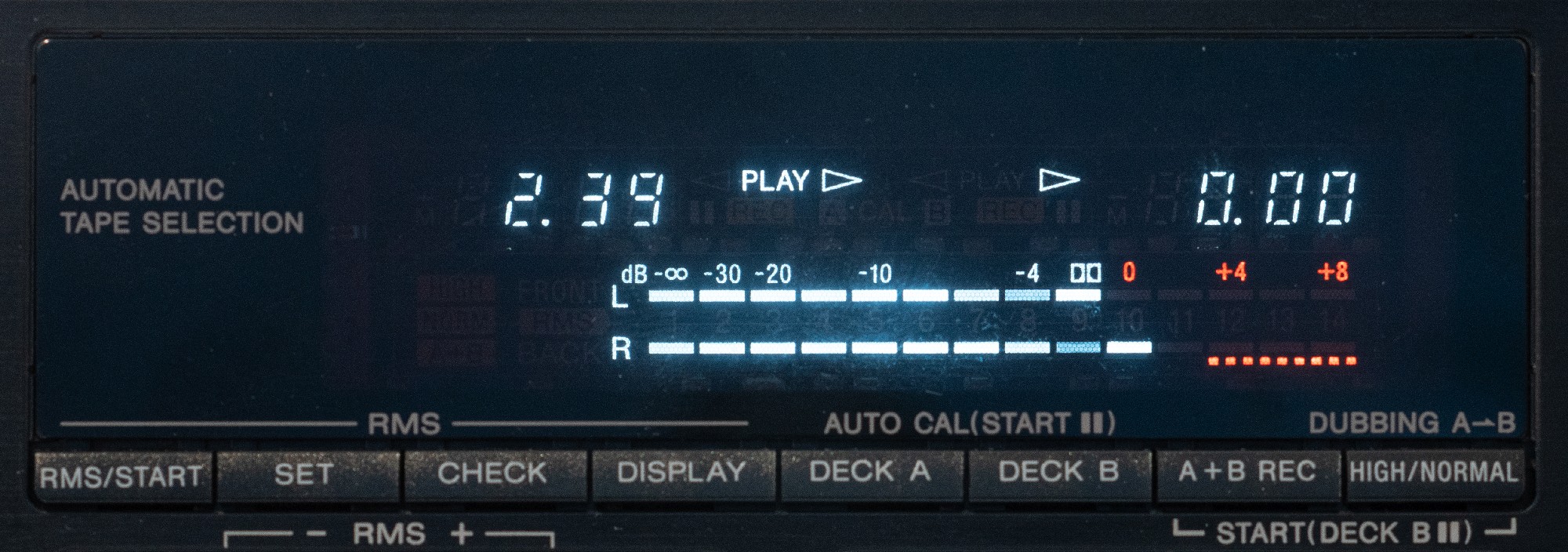
If you translate this rhetoric into a computer language, it is as if you have used, both for yourself and for work, the Apple II computer, because it is a great example of engineering and nothing in it distracts you from your modest computer affairs. It sounds strange: we are too accustomed in our digital reality to the logic of "faster, higher, stronger." More features, even if they are sometimes not needed at all.
In the third article on my audio cassette hobby, I study a tape recorder with the maximum number of functions per square centimeter of surface. In the times of relevance of this outdated format, I would prefer this two-cassette player to any more ascetic, albeit more worthy device. Today, the situation is rather the opposite, so I use a lot of digital audio tools to assess how seriously the analog sound of the eighties differs from modern times. The program also has a bit of 3D printing and strange experiments with encoding images into sound, simply because now we can!
Previous publications about tape recorders: the first review and the second with a description of the main tape technologies.
I keep a diary of a collector of old pieces of iron in a Telegram .
Audio cassettes at the end of the second decade of the twenty-first century are experiencing a short-term renaissance . The reasons for this phenomenon I described in the first article : this is a surprisingly illogical hobby, ideally requiring maintenance skills and setting up complex tape mechanisms, eating up a lot of time to record music in real time. This is partly such techno-foolishness: a voluntary rejection of technology, but not of all, but only of those that have been invented over the past twenty years. The deliberate complication of the process of collecting music, if otherwise life seems to you too simple. And also - a conscious slowdown in the pace of life, which accelerates a little faster than you want.
For me, this is more of a chance to recreate the infrastructure of pre-computer times when there were no processors in my favorite gadget, and the most valuable thing for a high school student was not stored in the cloud or on the hard drive, but on a shelf, worn from time to time and often carried in my pocket jackets in plastic boxes. Then I managed with a rather inexpensive two-cassette Sony: I wrote music from the radio, rewrote records from CD and vinyl from friends, made my own mixes of tracks from different tapes. Partially, the tape recorder was used to record software for the ZX Spectrum clone, which was relevant at that time.

Which device would I choose if the budget available to me at that time was at least slightly different from zero? In 2019, I buy such a dream tape player from the mid-nineties. This is the Sony TC-WE805S, the second oldest model from the 1996 Japanese company range. The second - among the two-cassette players, of course, single-cassette decks were also abruptly. Specifically, my copy, judging by the marks inside, was produced in 1997. He is 22 years old, on the front panel an incredible number of buttons. It was sold as a “fully working,” and it was true. The first five minutes.
At the sixth minute, the tape recorder behaved strangely: instead of playing, I tried to twist the tape in different directions, grated its gears and refused to turn off until I pulled out the power cord. I had to disassemble and see what happened there so terrible. The picture that opened to me clearly described the technology of cheaper production, relevant to the rapidly declining market for audio cassette technology of the late twentieth century.

The most important part of any tape recorder is the combination of capstan and a rubber roller. The roller presses the tape against the capstan, which rotates, and thus evenly stretches the tape past one (or more than one) magnetic head. Accordingly, in any tape recorder there is at least one motor that rotates the capstan - everything else is optional. In my Sony deck (in each mechanism) there are two motors - one is busy only with the rotation of the toner during playback. The second performs two tasks alternately: it rewinds the tape at high speed, and changes the operating modes: it activates the auto-reverse mechanism, brings the heads and rollers to the tape.
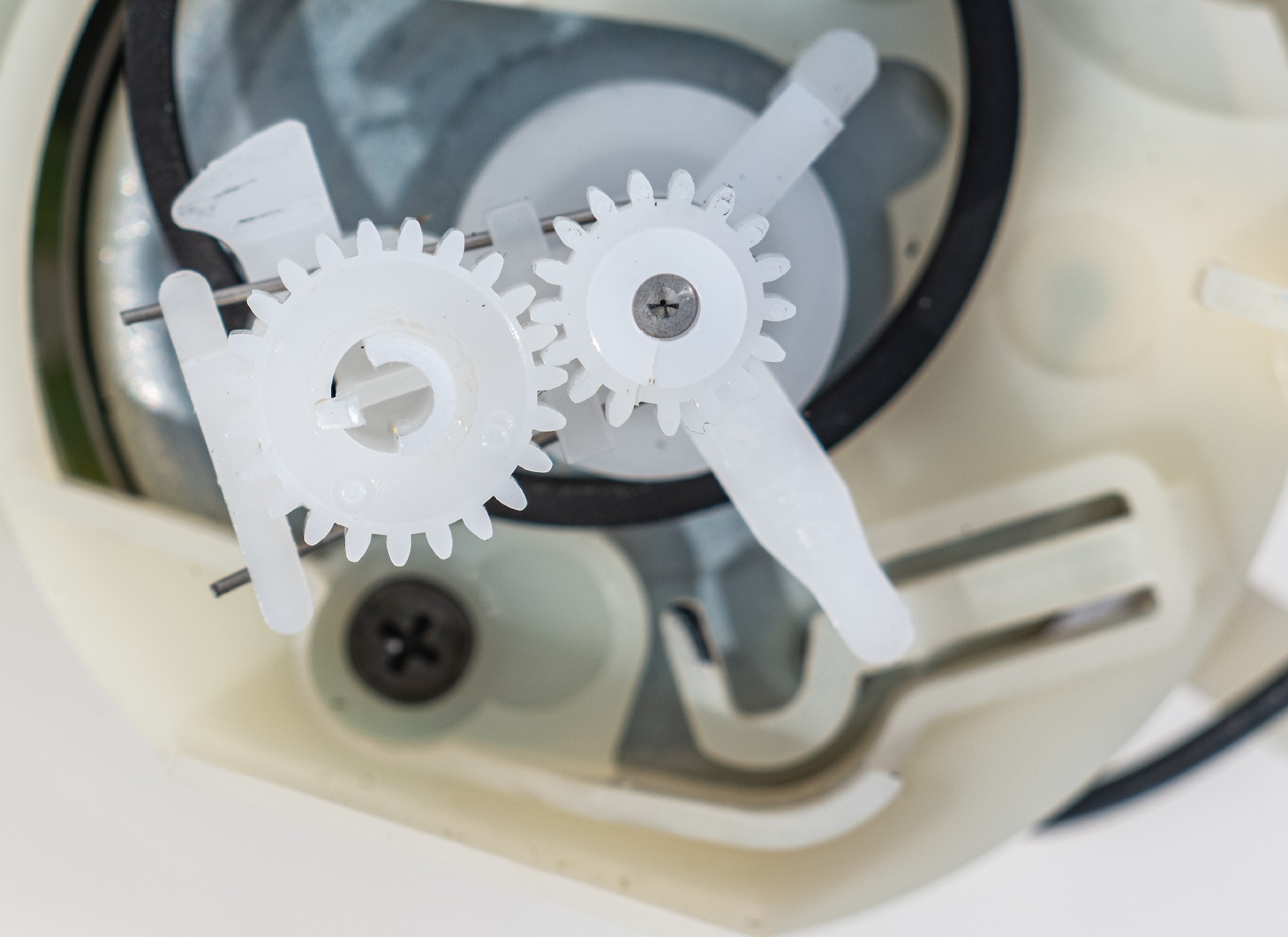
All this works thanks to a set of plastic gears rotating from the second motor in the right direction. Switching between functions (rewind or change modes) is implemented using this combination of two gears. This is not the best design in the world. In the “correct” tape recorders, different motors are responsible for rewinding and changing operating modes, so their total number per mechanism already reaches three. But most importantly, using cheap plastic where possible and impossible, Japanese engineers made the entire structure short-lived. More precisely, it is probably enough for the warranty period. Perhaps she will work without problems for five years. After 22 years, a small gear set directly on the metal axis begins to shrink. The iron does not compress, and sooner or later the plastic gear bursts and begins to turn.
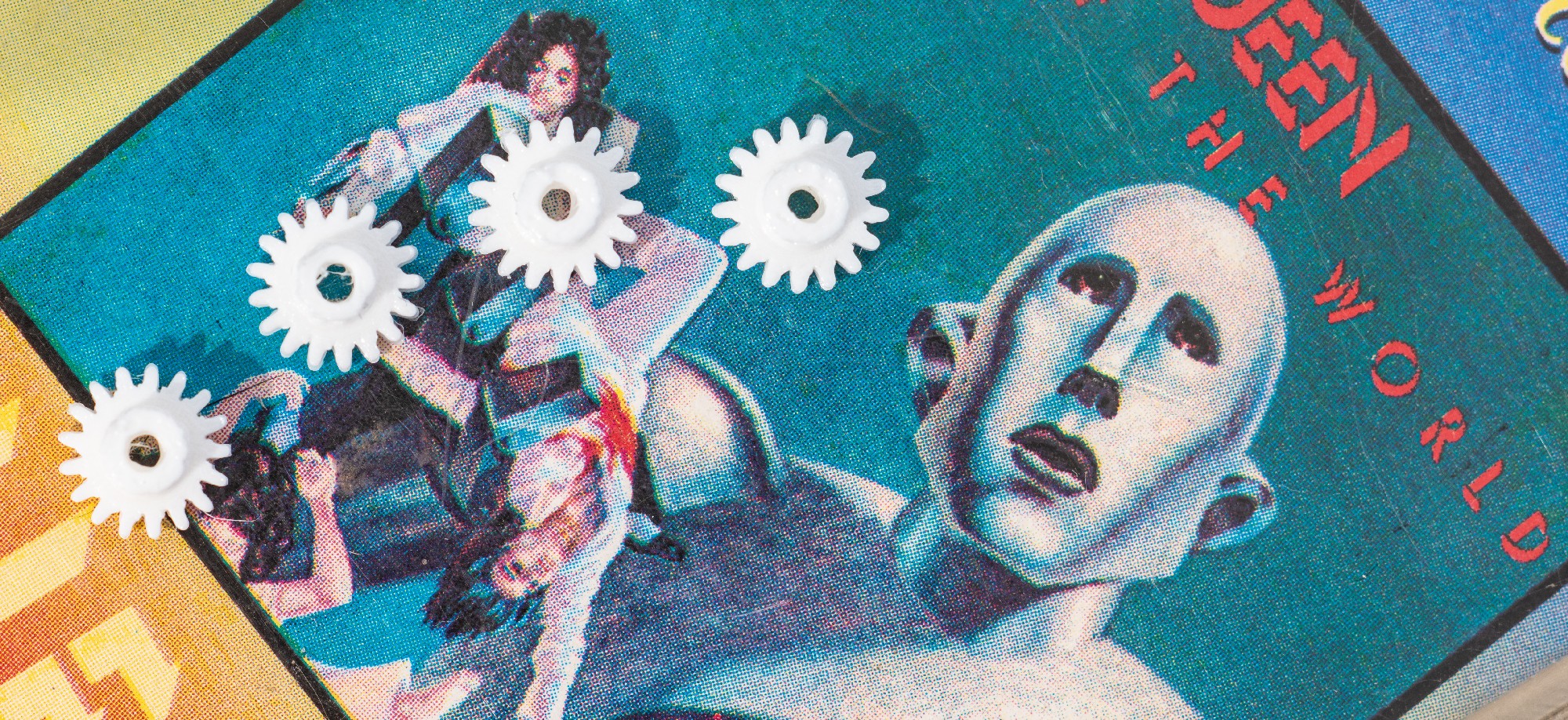
As a result, the motor ceases to fulfill its function and begins to engage in wrecking: it hooks the wrong gear sets, and the whole mechanism is being peddled. If you intend to purchase vintage cassette technology, such problems are highly likely to occur in instances of the sunset era. And there seems to be no adequate solution: spare parts have not been manufactured for a long time, even donors will not help - in similar mechanisms such a problem is found everywhere. 3D printing hurries to the rescue! From the Czech Republic, I order a copy of the gear I need, printed on a 3D printer. It is noticeable in the photo that the gear differs as if by the slightly fused edges of the teeth, but it fits perfectly in place.

Mandatory maintenance procedure for any old tape recorder: replacing rubber belts. For 20 years, especially if the tape recorder has not been used most of the time, they simply stretch. In older devices, rubber turns into liquid. Repair kits can still be found on eBay, but be prepared for the fact that the cost of a (inexpensive) tape recorder will double in this way. Ideally, you need to change the pressure rollers: time and active operation also do not benefit them. Almost any element of the cassette mechanism that does not work as it should, will affect, if not the sound, then the measured characteristics: speed and uniformity of the tape’s pulling, location accuracy relative to the heads, speed of rewinding. Such a relatively cheap tape recorder will, by definition, be worse than more expensive samples. But still, he is a cut above all that was at my disposal 20-30 years ago! And if so, let's finally look at its capabilities.
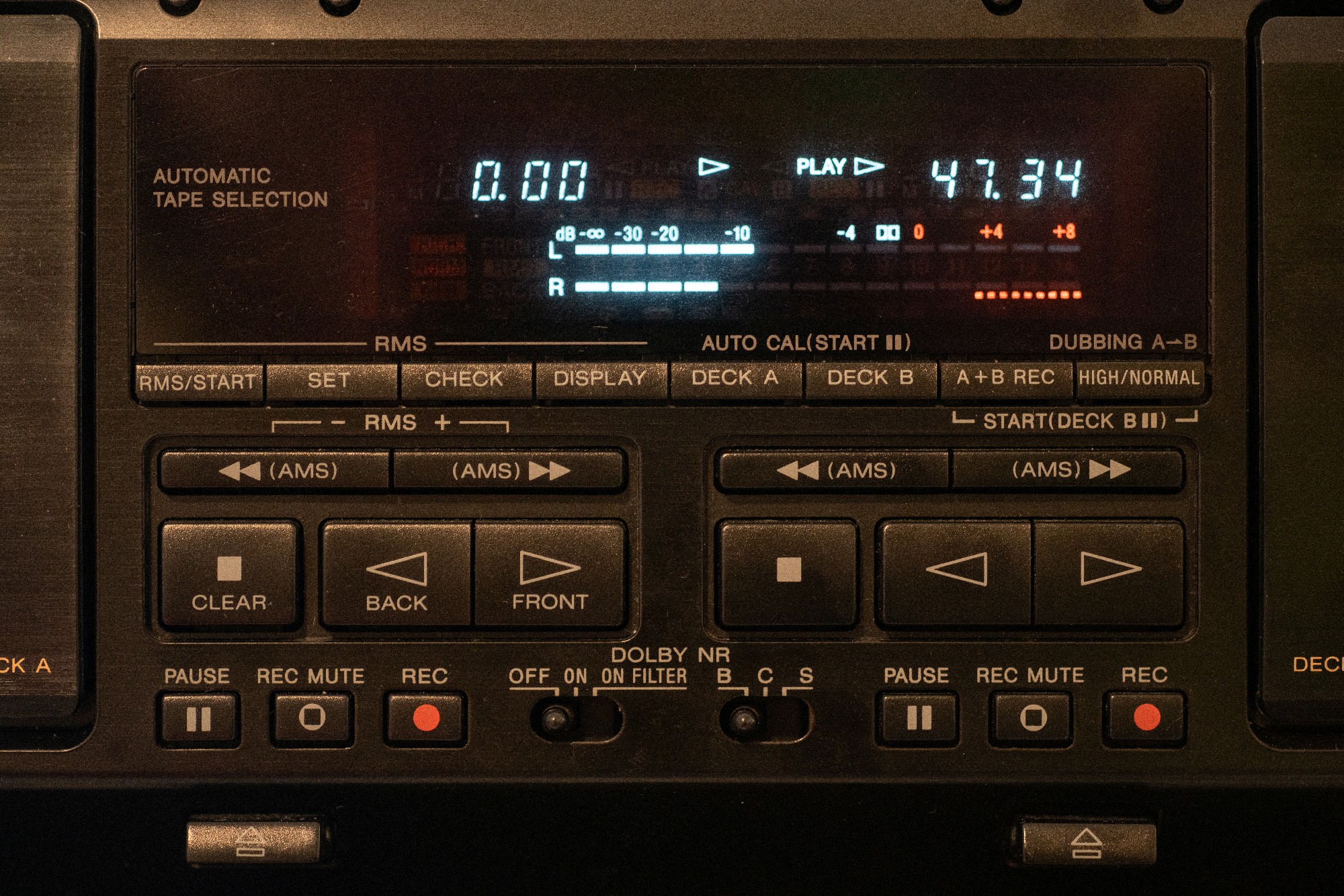
Why do we need a dual-cassette recorder? Of course, transfer music from one tape to another. Audio cassettes were originally invented by Philips in the sixties as a relatively low-quality medium for answering machines and voice recorders. In the seventies, cassette recorders became sophisticated enough to compete with reels and vinyl, while offering a much more compact medium. Add to this the distribution of cassette recorders (which have replaced the old 8-Track format), the distribution of portable players since 1979 and you will get a cheap, convenient, versatile and compact music storage format. For which, besides, it’s not at all necessary to buy records in the store: you can record from the radio or borrow a tape from friends. The music industry overslept this explosion of home recording, and on the plates released in the cassette era, you could see such a warning icon .

My Sony deck can record on “both pockets,” and it gives you more options than usual. You can transfer one tape to another at normal or double speed. Both options slightly degrade the quality with each copy, but this is normal for analog media. Double speed dubbing is useful if you have a cassette for a short while and you need to dub it as quickly as possible. You can record sound from an external source, such as a radio, onto two tapes at the same time. Or in turn: three hours of radio shows can be recorded on two ninety-minute cassettes, with short breaks for auto-reverse.
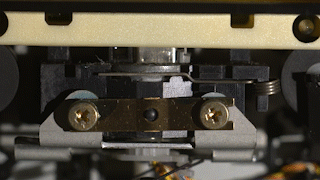
On the gif - the most common option for implementing auto reverse. In the usual cassette mechanism, we add another set of capstan and pinch roller. We make the magnetic head rotating. When the tape ends, the tape recorder automatically changes the direction of playback and turns its head so that it plays the recording on the other side of the tape. The disadvantage of this design is the impossibility of accurately orienting the head relative to the tape, so autoreverse is almost never found in the highest quality devices. Portable players use a simpler mechanism, with a “four-track” reading head that does not need to be rotated. There were more exotic options, turning the audio cassette itself, for example like this:
In the realities of the twenty-first century, autoreverse is needed primarily for convenience, so as not to run to the tape recorder every 30 or 45 minutes, and turn the cassette over. A double-cassette with double auto reverse allows you to listen to two tapes in a row - three hours of sound without additional body movements! Like other functional decks, this Sony tape recorder allows you to search for the next song on the tape, by pausing between tracks. The playback sequence can be programmed. Moreover, you can even rewrite the “program” to another tape: the recording “pocket” in this case is automatically paused while rewinding and searching is in progress.
In the article about cassette technologies, I described Dolby B and Dolby C noise reduction systems. They vary the level of the signal before recording to varying degrees so that there is more music output and less noise. In 1989, a third, Dolby S, was added to these two “cassette” noise reduction formats. A more sophisticated system promised to reduce noise both in the low-frequency region (where it is not particularly critical) and in the high-frequency region (where the constant hissing of a low-quality tape is very noticeable) . How it works? To begin, let's try to digitize a tape on which nothing is recorded (more precisely, something was recorded, and then erased - this option “makes noise” a little more than a blank tape).
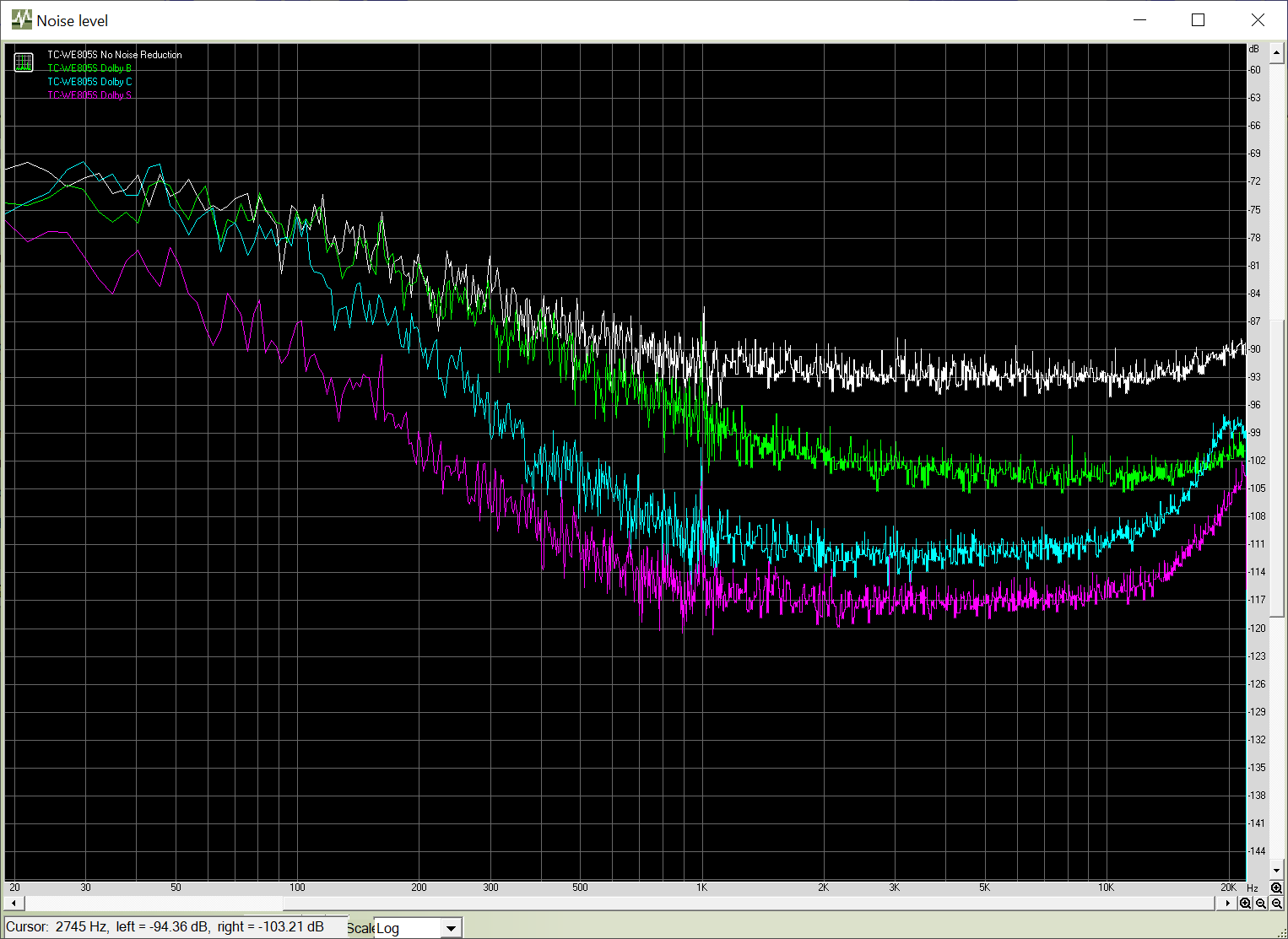
This is a tape of the second type, by definition, less noisy than the cheapest and most common Type I cassettes. Dolby S generally fulfills an advertising promise, and reduces noise almost to the level of a CD. But filtering the void is simple, more difficult to reduce noise without touching the sound. Let's start with a simple one: we will record a signal with a frequency of 1 kilohertz, and see what happens:
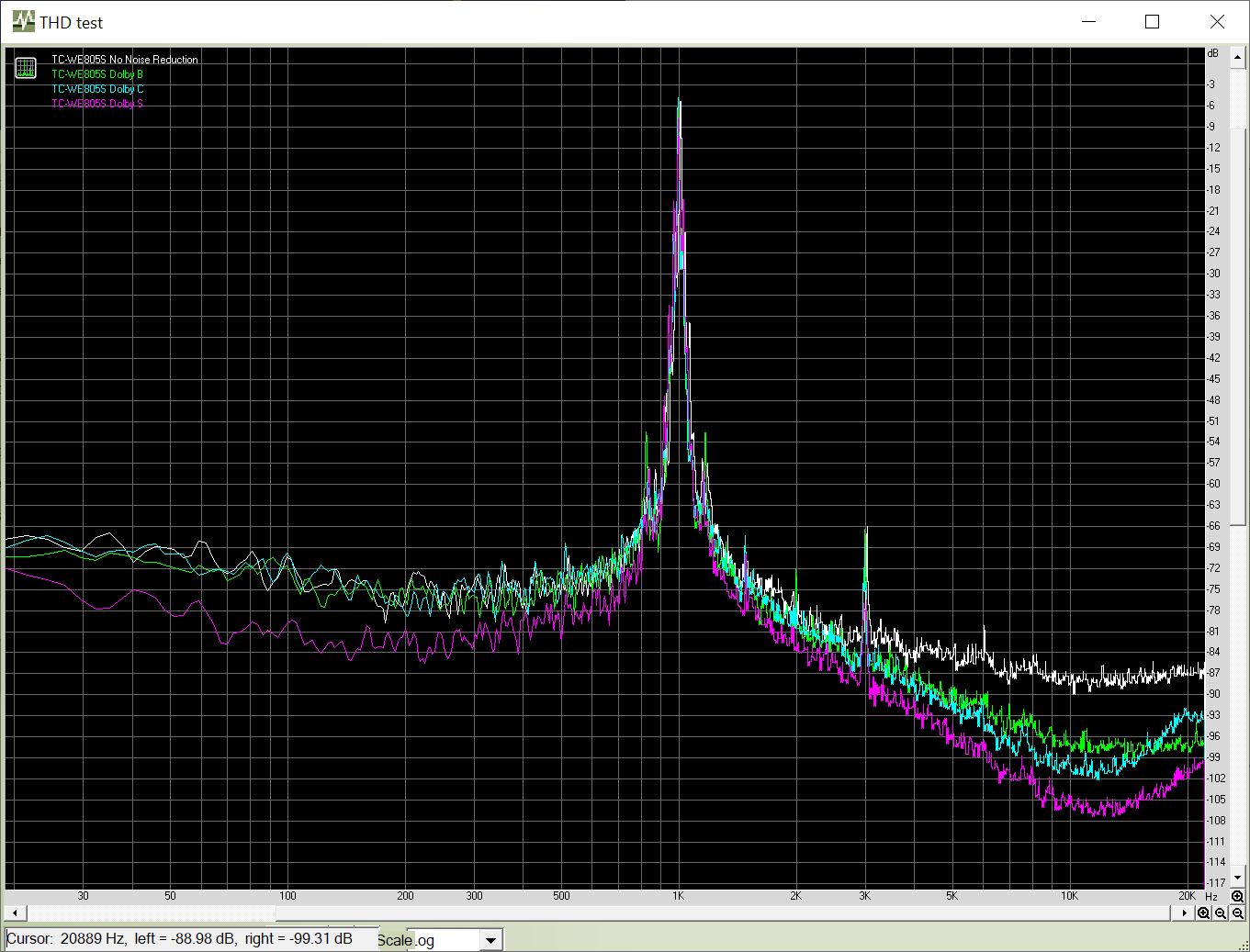
A noticeable “skirt” on the graph is the result of uneven stretching of the tape with a cheap mechanism, and the distortions introduced by the tape when recording. Compare it with the "reference" signal from a modern digital player:
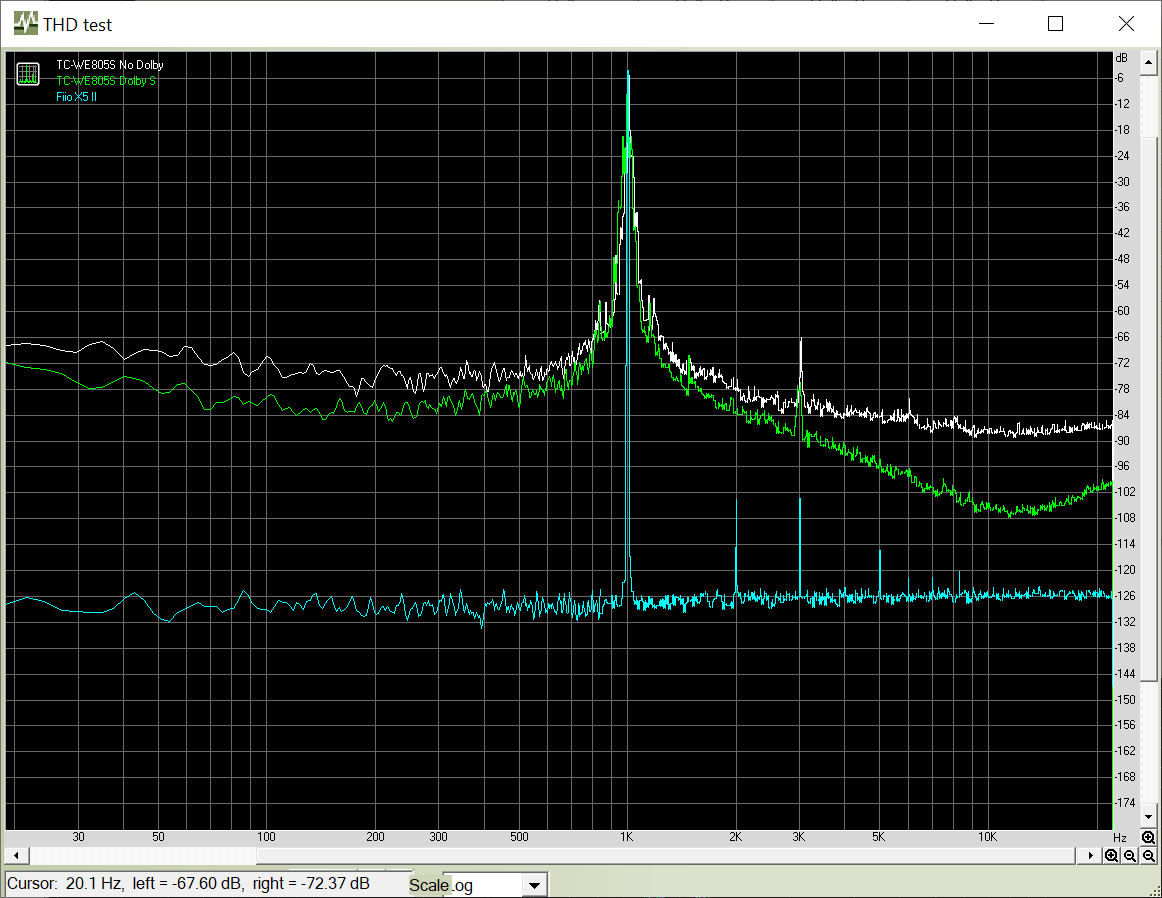
This is what progress looks like. How well does music sound with noise reduction and does Dolby S really provide tape recording quality comparable to CD on “live” material? The last time I conducted such a test on loud music, where the distortion and noise of the tape is not so easy to hear. This time the test is more complicated: quiet piano music . This is not “the best way to record on a cassette” - see above remarks about the budget mechanism of my cassette deck. But such a tape recorder is available to everyone who wants to join the vintage audio format for little money. Is it worth it? Listen and decide for yourself. And at the same time, you can watch the previous version of the video , where the tape recorder had an unusually high speed unevenness.
The measurement results of various noise reduction systems in the RightMark Audio Analyzer test program are in my Telegram .
Most of the time I use cassette technology for its intended purpose: I record and listen to music, both new and old (I have a separate channel about the old). But no less, I like to experience vintage technology using a modern arsenal of tools for analyzing and processing digital sound. The graphs shown above are a more or less scientific way of doing this research. I will end the article with an unscientific, but visually interesting method.
In 1999, British musician Richard James (aka Aphex Twin) released EP Windowlicker . There are only three tracks, and on the title, quite “human” from the point of view of the musical component, experiments are already being used to add noise, which on the spectrogram are added to a certain picture:
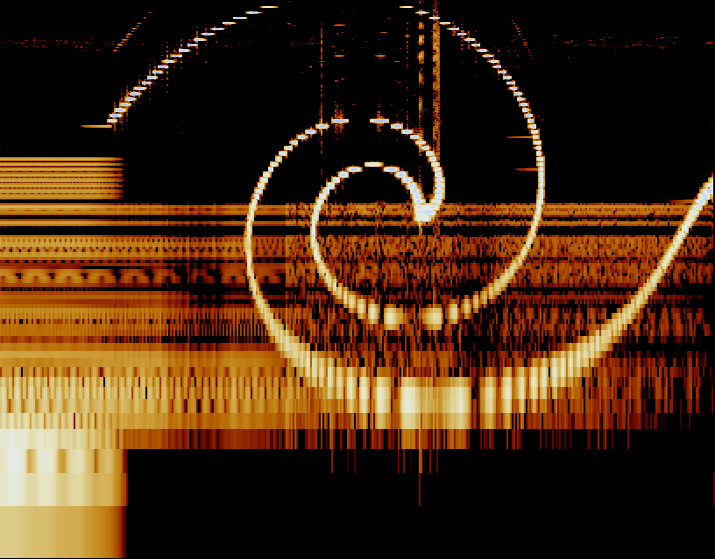
The second track, which has a complex mathematical formula instead of the name (it is usually called the "Equation"), for an unprepared listener is just a random noise. The culmination of the composition, if you look at the spectrum of the recording, becomes the distorted face of Richard James, as in the picture below.

The spectrogram shows the signal level depending on the frequency - the higher the level, the brighter the “points”, the farther along the vertical axis, the higher the frequency. The example with the Richard James album is a very strange, not very high-quality, but still a way to encode an image in sound. And the better the quality of the sound carrier, the sharper the image will be, and vice versa. And this is an interesting way to visually imagine what exactly we are losing if we take a digital signal and compress it with losses into another digital format, or record (also with losses and distortions) on an analog medium. My programming skills leave much to be desired, but fortunately they have already done such a thing: on GitHub I found a project of a certain Alex Adam that transcodes pictures into sound . There is even a version of the encoder that works directly in the browser . It works like this: take a picture.

We select the duration of the audio file (the longer, the more details “horizontally”) and the maximum frequency (“vertically”). We get a monaural WAV file, open it in the free Sonic Visualizer program:
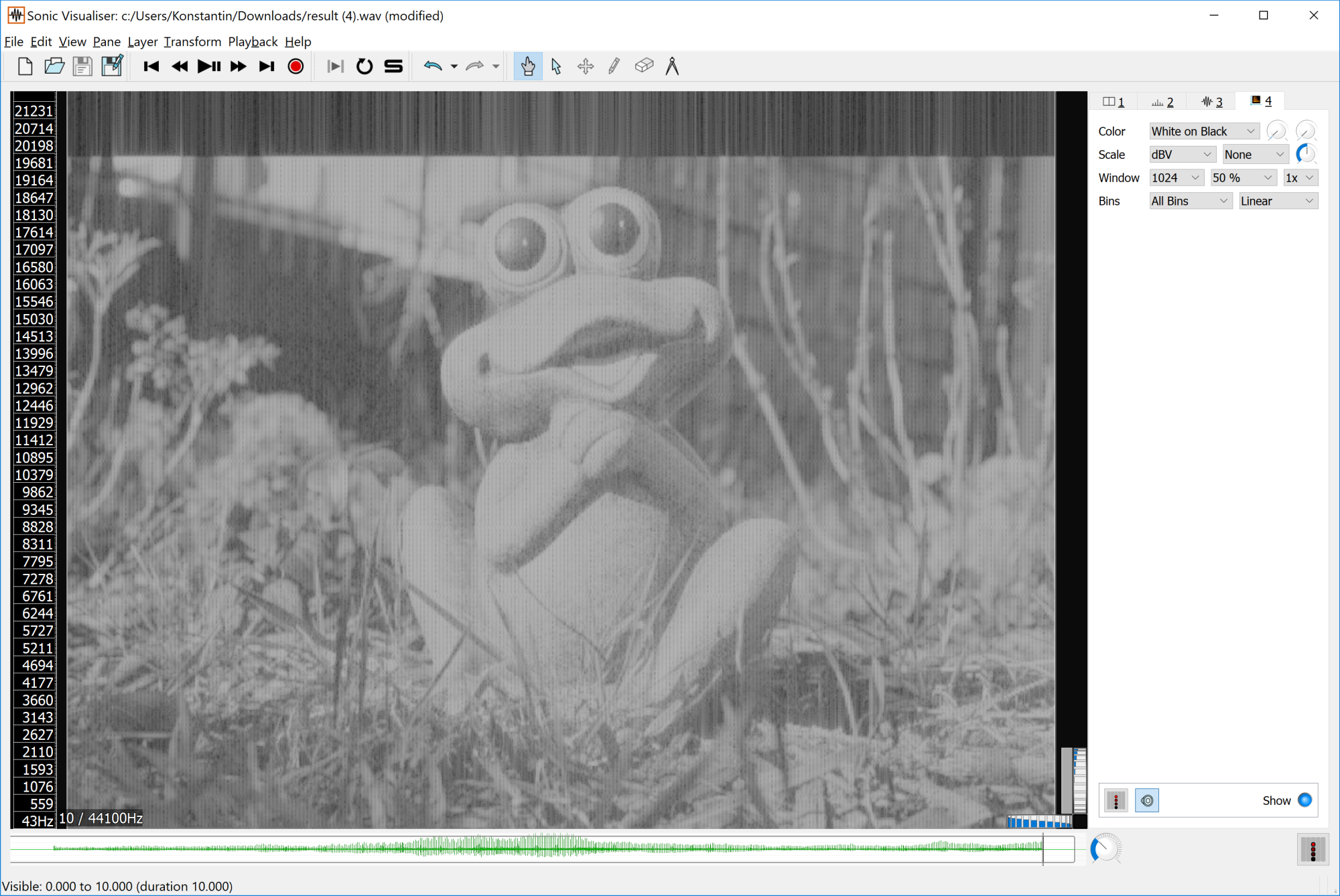
Not bad! But for further experiments, we need something with repeating elements, such as a set-up table for a TV.
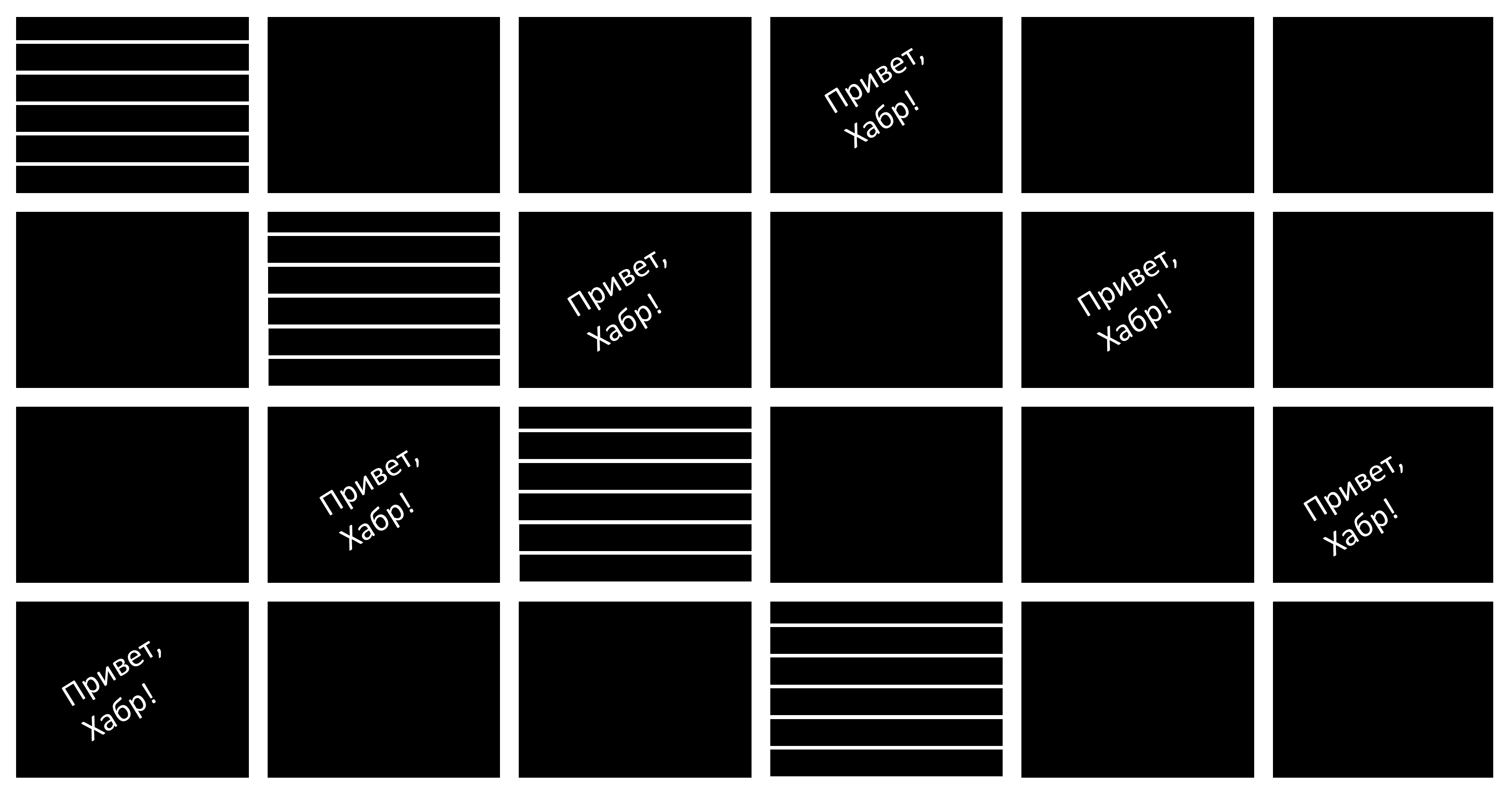
Something like this. After coding, and without conversion, this is what happens:
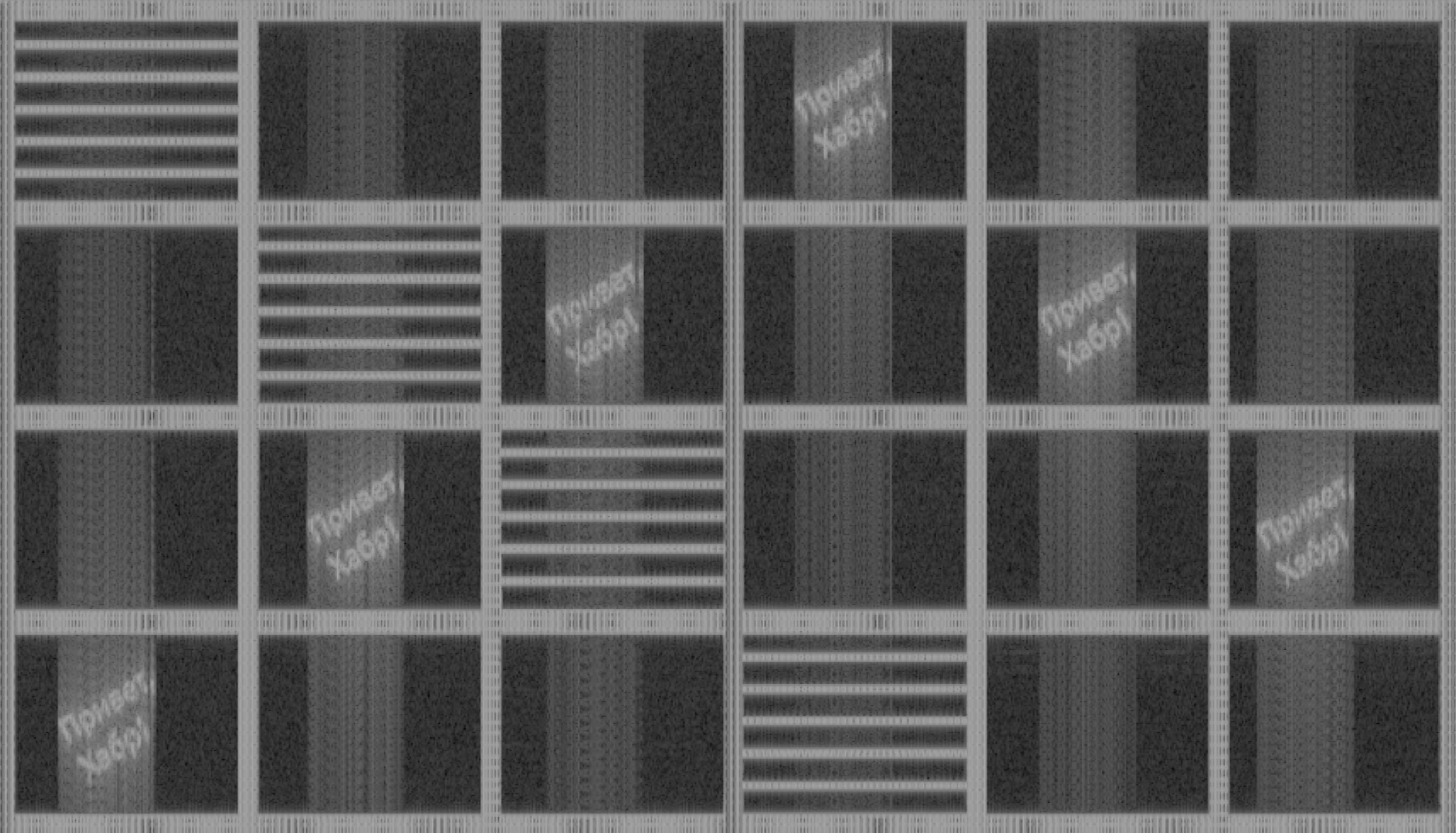
An interesting steganography option, if you like. Just listening to how it sounds, I do not recommend. Before recording on tape, let's try to compress this file into MP3 format with losses. Choose a modest bitrate of 128 kilobits per second.
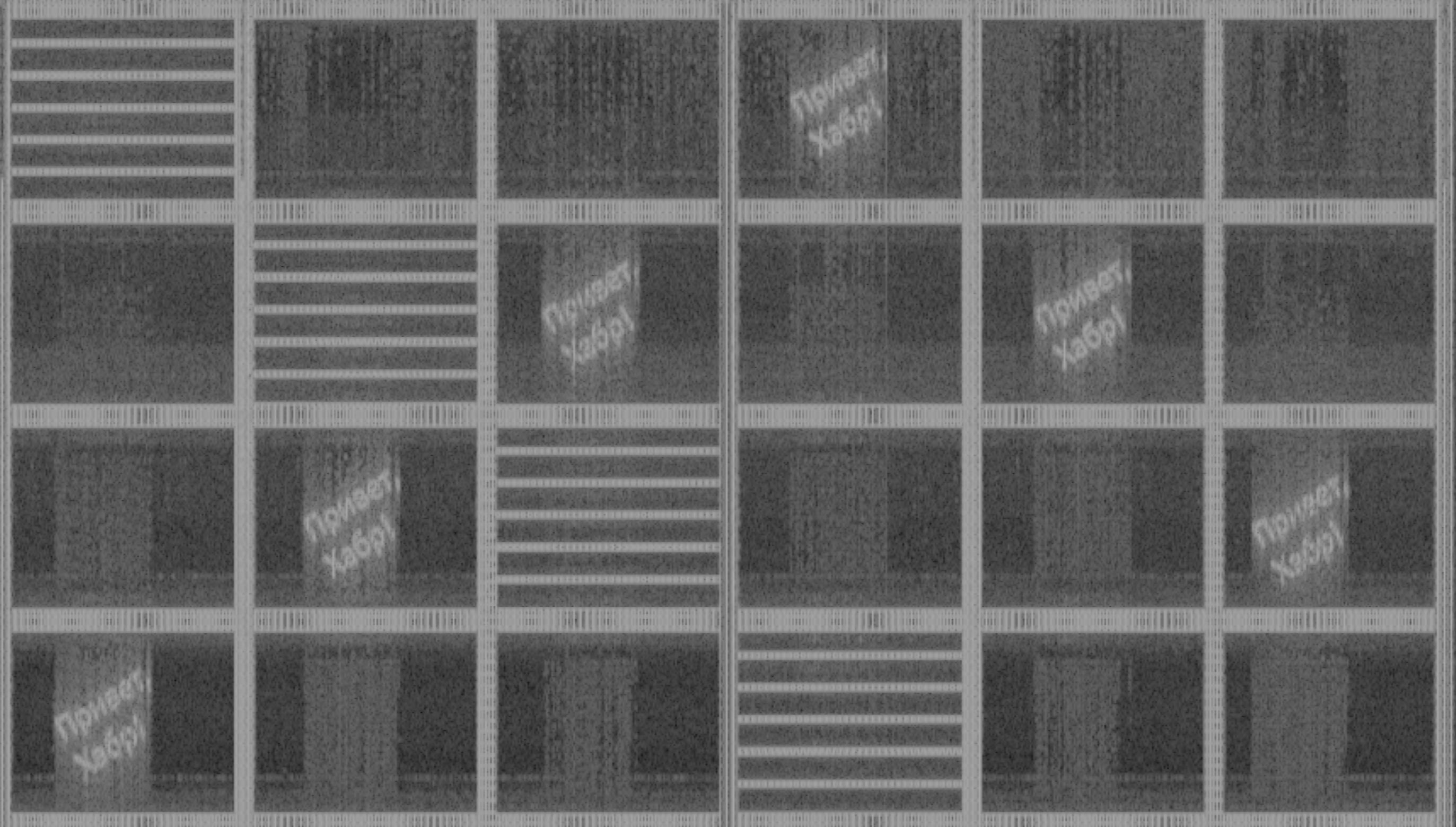
Small details were affected, but in general everything is clear. Now we’ll recordthis horror on tape.

There is a change. There was more noise, because of the uneven stretching of the tape horizontal lines “jumped”. But wait, this is a good tape recorder and an expensive tape. Let's try a mediocre tape recorder (the hero of this article) and a cheap tape of the first type.
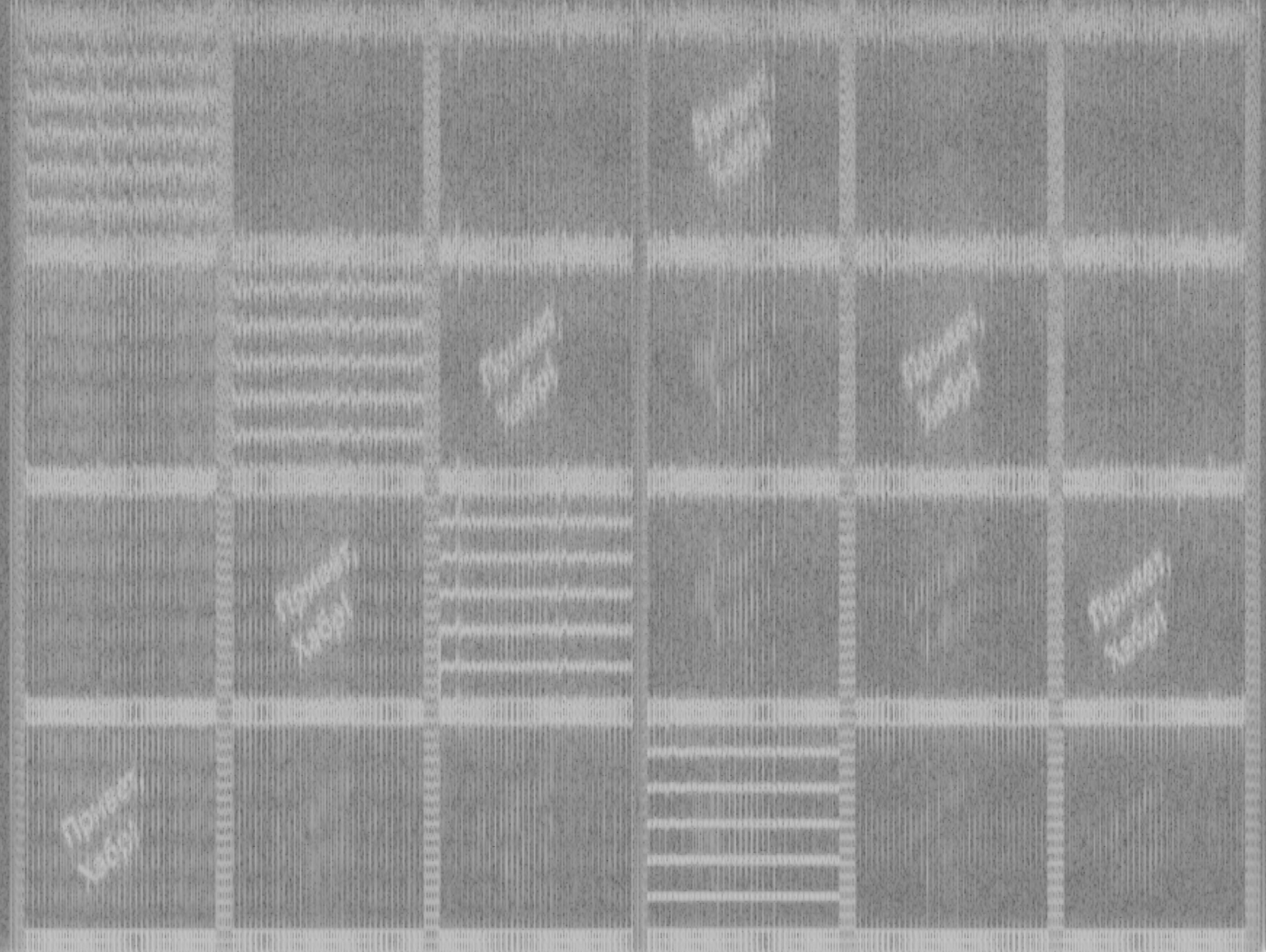
Even more detonation, high frequencies began to disappear. Well, the last for today is a reference record on an elite cartridge MK-60-5, produced by the Kazan Tasma Production Association in 1991.
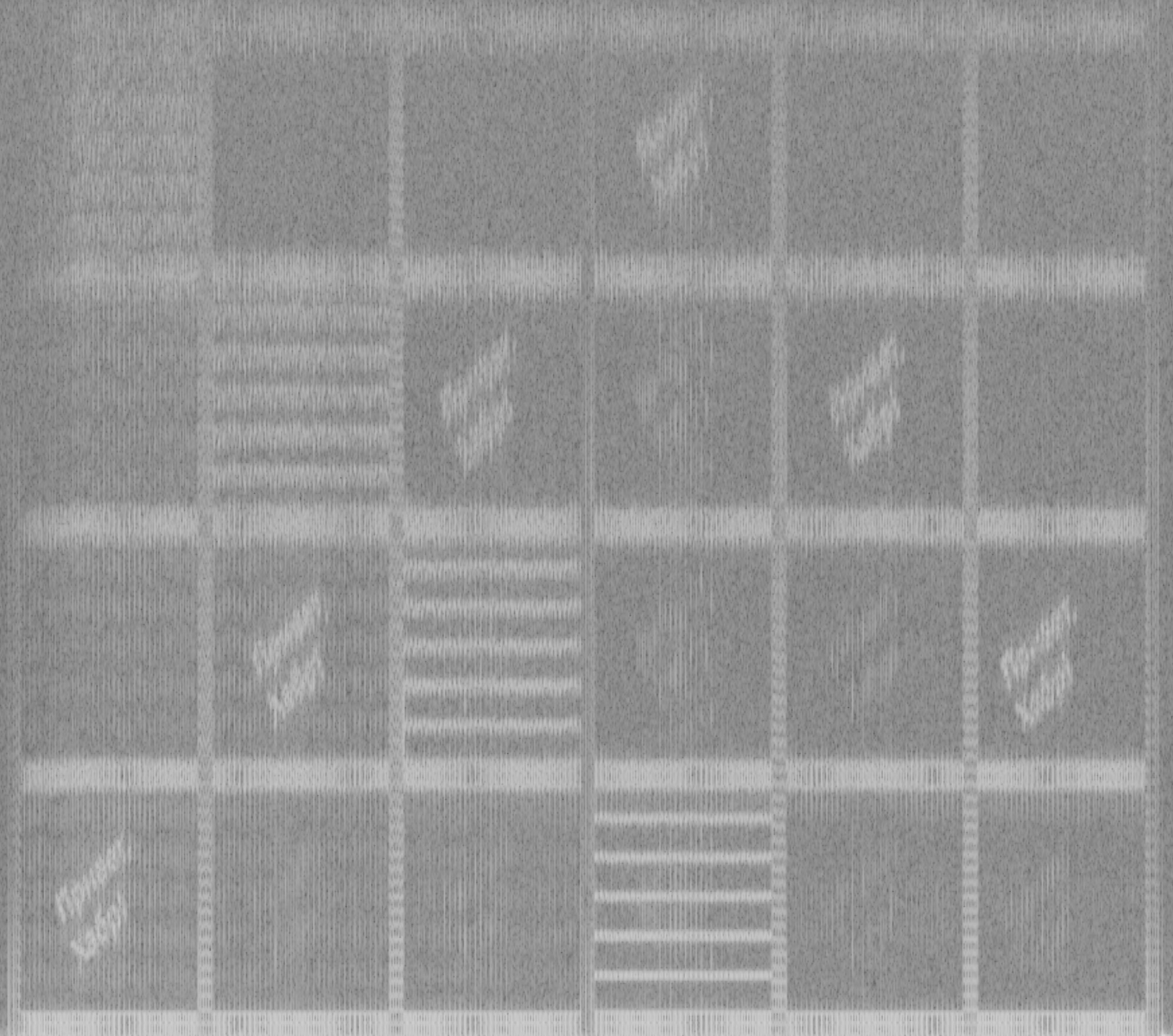
Everything above 10 kilohertz is present rudimentarily, artifacts in the range from 20 to 4000 hertz are more or less normally preserved. The most interesting thing is that on such tapes we managed to record and listen to music.
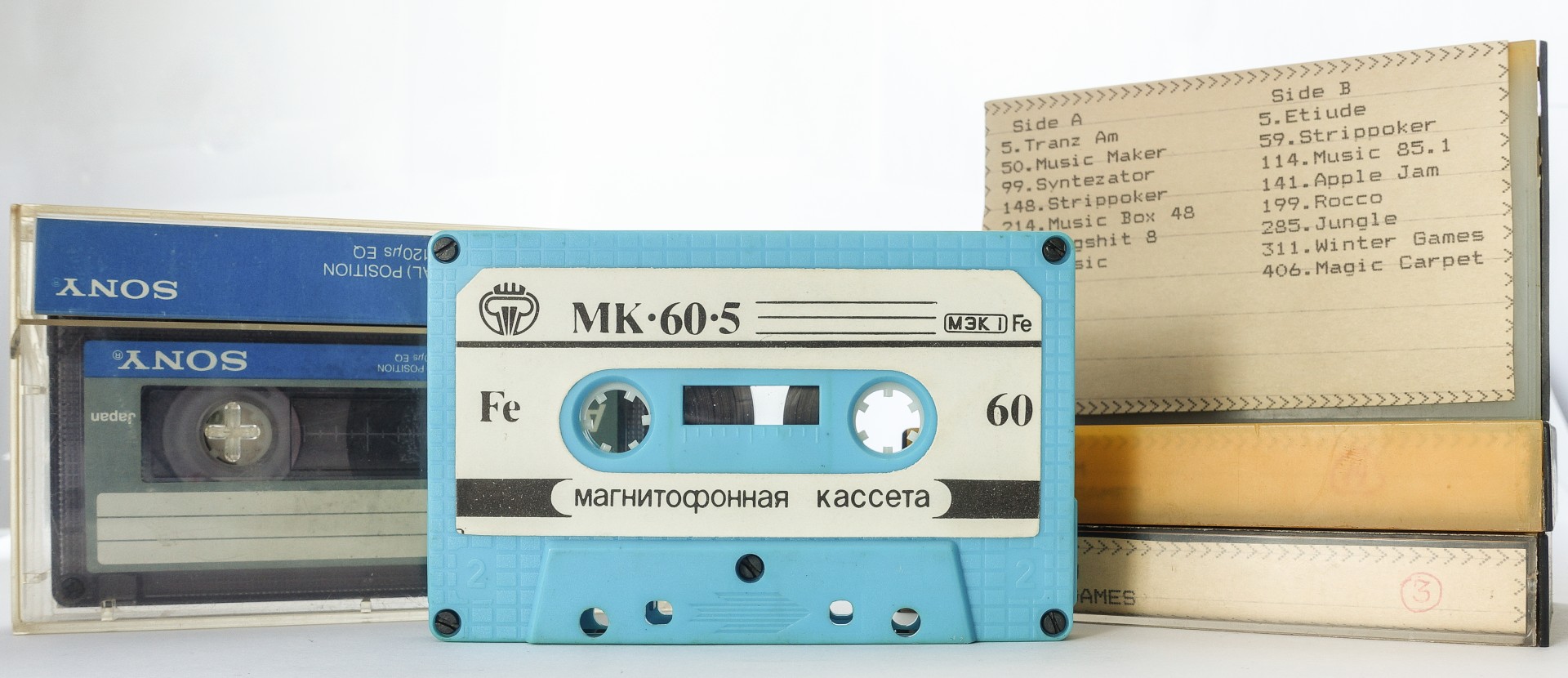
Since this multifunction deck turned out to be worse than my first tape recorder, I use it where it is not so pathetic, mainly for listening to old tapes from those times. Meanwhile, my collection of new music on tapes is slowly growing. I buy it on Bandcamp, and in this case, the physical medium complements the digital one. Almost like a souvenir - you don’t even have to listen to it. This embodiment of important things for you ingranite plastic is sometimes not enough in our modern virtual cloud world, when books, music and films are just a sequence of numbers encoded on a piece of silicon.
It seems to me that new generations will suffer less from this attachment to things, and I myself, when I go on a trip, take my phone with me, and not at all a stack of tapes, a player, and books. But at home I always have a collection of ribbons waiting for me, and I am pleased to realize that I continue my hobby, which I started in 1989, 30 years ago. Over these three decades, technology has become much more reliable, versatile and cheaper. In an article about MP3 players, I already described the phenomenon when a class of devices that seemed to be doomed to extinction acquired a second life. I don’t agitate anyone to join the formats of the past, but it’s good that now there is a choice - when new technologies develop and old ones are available, for connoisseurs and those who want to go against.

If you translate this rhetoric into a computer language, it is as if you have used, both for yourself and for work, the Apple II computer, because it is a great example of engineering and nothing in it distracts you from your modest computer affairs. It sounds strange: we are too accustomed in our digital reality to the logic of "faster, higher, stronger." More features, even if they are sometimes not needed at all.
In the third article on my audio cassette hobby, I study a tape recorder with the maximum number of functions per square centimeter of surface. In the times of relevance of this outdated format, I would prefer this two-cassette player to any more ascetic, albeit more worthy device. Today, the situation is rather the opposite, so I use a lot of digital audio tools to assess how seriously the analog sound of the eighties differs from modern times. The program also has a bit of 3D printing and strange experiments with encoding images into sound, simply because now we can!
Previous publications about tape recorders: the first review and the second with a description of the main tape technologies.
I keep a diary of a collector of old pieces of iron in a Telegram .
Audio cassettes at the end of the second decade of the twenty-first century are experiencing a short-term renaissance . The reasons for this phenomenon I described in the first article : this is a surprisingly illogical hobby, ideally requiring maintenance skills and setting up complex tape mechanisms, eating up a lot of time to record music in real time. This is partly such techno-foolishness: a voluntary rejection of technology, but not of all, but only of those that have been invented over the past twenty years. The deliberate complication of the process of collecting music, if otherwise life seems to you too simple. And also - a conscious slowdown in the pace of life, which accelerates a little faster than you want.
For me, this is more of a chance to recreate the infrastructure of pre-computer times when there were no processors in my favorite gadget, and the most valuable thing for a high school student was not stored in the cloud or on the hard drive, but on a shelf, worn from time to time and often carried in my pocket jackets in plastic boxes. Then I managed with a rather inexpensive two-cassette Sony: I wrote music from the radio, rewrote records from CD and vinyl from friends, made my own mixes of tracks from different tapes. Partially, the tape recorder was used to record software for the ZX Spectrum clone, which was relevant at that time.

Which device would I choose if the budget available to me at that time was at least slightly different from zero? In 2019, I buy such a dream tape player from the mid-nineties. This is the Sony TC-WE805S, the second oldest model from the 1996 Japanese company range. The second - among the two-cassette players, of course, single-cassette decks were also abruptly. Specifically, my copy, judging by the marks inside, was produced in 1997. He is 22 years old, on the front panel an incredible number of buttons. It was sold as a “fully working,” and it was true. The first five minutes.
Recovery
At the sixth minute, the tape recorder behaved strangely: instead of playing, I tried to twist the tape in different directions, grated its gears and refused to turn off until I pulled out the power cord. I had to disassemble and see what happened there so terrible. The picture that opened to me clearly described the technology of cheaper production, relevant to the rapidly declining market for audio cassette technology of the late twentieth century.

The most important part of any tape recorder is the combination of capstan and a rubber roller. The roller presses the tape against the capstan, which rotates, and thus evenly stretches the tape past one (or more than one) magnetic head. Accordingly, in any tape recorder there is at least one motor that rotates the capstan - everything else is optional. In my Sony deck (in each mechanism) there are two motors - one is busy only with the rotation of the toner during playback. The second performs two tasks alternately: it rewinds the tape at high speed, and changes the operating modes: it activates the auto-reverse mechanism, brings the heads and rollers to the tape.

All this works thanks to a set of plastic gears rotating from the second motor in the right direction. Switching between functions (rewind or change modes) is implemented using this combination of two gears. This is not the best design in the world. In the “correct” tape recorders, different motors are responsible for rewinding and changing operating modes, so their total number per mechanism already reaches three. But most importantly, using cheap plastic where possible and impossible, Japanese engineers made the entire structure short-lived. More precisely, it is probably enough for the warranty period. Perhaps she will work without problems for five years. After 22 years, a small gear set directly on the metal axis begins to shrink. The iron does not compress, and sooner or later the plastic gear bursts and begins to turn.

As a result, the motor ceases to fulfill its function and begins to engage in wrecking: it hooks the wrong gear sets, and the whole mechanism is being peddled. If you intend to purchase vintage cassette technology, such problems are highly likely to occur in instances of the sunset era. And there seems to be no adequate solution: spare parts have not been manufactured for a long time, even donors will not help - in similar mechanisms such a problem is found everywhere. 3D printing hurries to the rescue! From the Czech Republic, I order a copy of the gear I need, printed on a 3D printer. It is noticeable in the photo that the gear differs as if by the slightly fused edges of the teeth, but it fits perfectly in place.

Mandatory maintenance procedure for any old tape recorder: replacing rubber belts. For 20 years, especially if the tape recorder has not been used most of the time, they simply stretch. In older devices, rubber turns into liquid. Repair kits can still be found on eBay, but be prepared for the fact that the cost of a (inexpensive) tape recorder will double in this way. Ideally, you need to change the pressure rollers: time and active operation also do not benefit them. Almost any element of the cassette mechanism that does not work as it should, will affect, if not the sound, then the measured characteristics: speed and uniformity of the tape’s pulling, location accuracy relative to the heads, speed of rewinding. Such a relatively cheap tape recorder will, by definition, be worse than more expensive samples. But still, he is a cut above all that was at my disposal 20-30 years ago! And if so, let's finally look at its capabilities.
Autoreverse and his friends

Why do we need a dual-cassette recorder? Of course, transfer music from one tape to another. Audio cassettes were originally invented by Philips in the sixties as a relatively low-quality medium for answering machines and voice recorders. In the seventies, cassette recorders became sophisticated enough to compete with reels and vinyl, while offering a much more compact medium. Add to this the distribution of cassette recorders (which have replaced the old 8-Track format), the distribution of portable players since 1979 and you will get a cheap, convenient, versatile and compact music storage format. For which, besides, it’s not at all necessary to buy records in the store: you can record from the radio or borrow a tape from friends. The music industry overslept this explosion of home recording, and on the plates released in the cassette era, you could see such a warning icon .

My Sony deck can record on “both pockets,” and it gives you more options than usual. You can transfer one tape to another at normal or double speed. Both options slightly degrade the quality with each copy, but this is normal for analog media. Double speed dubbing is useful if you have a cassette for a short while and you need to dub it as quickly as possible. You can record sound from an external source, such as a radio, onto two tapes at the same time. Or in turn: three hours of radio shows can be recorded on two ninety-minute cassettes, with short breaks for auto-reverse.

On the gif - the most common option for implementing auto reverse. In the usual cassette mechanism, we add another set of capstan and pinch roller. We make the magnetic head rotating. When the tape ends, the tape recorder automatically changes the direction of playback and turns its head so that it plays the recording on the other side of the tape. The disadvantage of this design is the impossibility of accurately orienting the head relative to the tape, so autoreverse is almost never found in the highest quality devices. Portable players use a simpler mechanism, with a “four-track” reading head that does not need to be rotated. There were more exotic options, turning the audio cassette itself, for example like this:
In the realities of the twenty-first century, autoreverse is needed primarily for convenience, so as not to run to the tape recorder every 30 or 45 minutes, and turn the cassette over. A double-cassette with double auto reverse allows you to listen to two tapes in a row - three hours of sound without additional body movements! Like other functional decks, this Sony tape recorder allows you to search for the next song on the tape, by pausing between tracks. The playback sequence can be programmed. Moreover, you can even rewrite the “program” to another tape: the recording “pocket” in this case is automatically paused while rewinding and searching is in progress.
Top class noise reduction
In the article about cassette technologies, I described Dolby B and Dolby C noise reduction systems. They vary the level of the signal before recording to varying degrees so that there is more music output and less noise. In 1989, a third, Dolby S, was added to these two “cassette” noise reduction formats. A more sophisticated system promised to reduce noise both in the low-frequency region (where it is not particularly critical) and in the high-frequency region (where the constant hissing of a low-quality tape is very noticeable) . How it works? To begin, let's try to digitize a tape on which nothing is recorded (more precisely, something was recorded, and then erased - this option “makes noise” a little more than a blank tape).

This is a tape of the second type, by definition, less noisy than the cheapest and most common Type I cassettes. Dolby S generally fulfills an advertising promise, and reduces noise almost to the level of a CD. But filtering the void is simple, more difficult to reduce noise without touching the sound. Let's start with a simple one: we will record a signal with a frequency of 1 kilohertz, and see what happens:

A noticeable “skirt” on the graph is the result of uneven stretching of the tape with a cheap mechanism, and the distortions introduced by the tape when recording. Compare it with the "reference" signal from a modern digital player:

This is what progress looks like. How well does music sound with noise reduction and does Dolby S really provide tape recording quality comparable to CD on “live” material? The last time I conducted such a test on loud music, where the distortion and noise of the tape is not so easy to hear. This time the test is more complicated: quiet piano music . This is not “the best way to record on a cassette” - see above remarks about the budget mechanism of my cassette deck. But such a tape recorder is available to everyone who wants to join the vintage audio format for little money. Is it worth it? Listen and decide for yourself. And at the same time, you can watch the previous version of the video , where the tape recorder had an unusually high speed unevenness.
The measurement results of various noise reduction systems in the RightMark Audio Analyzer test program are in my Telegram .
The face of Richard James
Most of the time I use cassette technology for its intended purpose: I record and listen to music, both new and old (I have a separate channel about the old). But no less, I like to experience vintage technology using a modern arsenal of tools for analyzing and processing digital sound. The graphs shown above are a more or less scientific way of doing this research. I will end the article with an unscientific, but visually interesting method.
In 1999, British musician Richard James (aka Aphex Twin) released EP Windowlicker . There are only three tracks, and on the title, quite “human” from the point of view of the musical component, experiments are already being used to add noise, which on the spectrogram are added to a certain picture:

The second track, which has a complex mathematical formula instead of the name (it is usually called the "Equation"), for an unprepared listener is just a random noise. The culmination of the composition, if you look at the spectrum of the recording, becomes the distorted face of Richard James, as in the picture below.

The spectrogram shows the signal level depending on the frequency - the higher the level, the brighter the “points”, the farther along the vertical axis, the higher the frequency. The example with the Richard James album is a very strange, not very high-quality, but still a way to encode an image in sound. And the better the quality of the sound carrier, the sharper the image will be, and vice versa. And this is an interesting way to visually imagine what exactly we are losing if we take a digital signal and compress it with losses into another digital format, or record (also with losses and distortions) on an analog medium. My programming skills leave much to be desired, but fortunately they have already done such a thing: on GitHub I found a project of a certain Alex Adam that transcodes pictures into sound . There is even a version of the encoder that works directly in the browser . It works like this: take a picture.

We select the duration of the audio file (the longer, the more details “horizontally”) and the maximum frequency (“vertically”). We get a monaural WAV file, open it in the free Sonic Visualizer program:

Not bad! But for further experiments, we need something with repeating elements, such as a set-up table for a TV.

Something like this. After coding, and without conversion, this is what happens:

An interesting steganography option, if you like. Just listening to how it sounds, I do not recommend. Before recording on tape, let's try to compress this file into MP3 format with losses. Choose a modest bitrate of 128 kilobits per second.

Small details were affected, but in general everything is clear. Now we’ll record

There is a change. There was more noise, because of the uneven stretching of the tape horizontal lines “jumped”. But wait, this is a good tape recorder and an expensive tape. Let's try a mediocre tape recorder (the hero of this article) and a cheap tape of the first type.

Even more detonation, high frequencies began to disappear. Well, the last for today is a reference record on an elite cartridge MK-60-5, produced by the Kazan Tasma Production Association in 1991.

Everything above 10 kilohertz is present rudimentarily, artifacts in the range from 20 to 4000 hertz are more or less normally preserved. The most interesting thing is that on such tapes we managed to record and listen to music.
Cassettes will live (or not)

Since this multifunction deck turned out to be worse than my first tape recorder, I use it where it is not so pathetic, mainly for listening to old tapes from those times. Meanwhile, my collection of new music on tapes is slowly growing. I buy it on Bandcamp, and in this case, the physical medium complements the digital one. Almost like a souvenir - you don’t even have to listen to it. This embodiment of important things for you in
It seems to me that new generations will suffer less from this attachment to things, and I myself, when I go on a trip, take my phone with me, and not at all a stack of tapes, a player, and books. But at home I always have a collection of ribbons waiting for me, and I am pleased to realize that I continue my hobby, which I started in 1989, 30 years ago. Over these three decades, technology has become much more reliable, versatile and cheaper. In an article about MP3 players, I already described the phenomenon when a class of devices that seemed to be doomed to extinction acquired a second life. I don’t agitate anyone to join the formats of the past, but it’s good that now there is a choice - when new technologies develop and old ones are available, for connoisseurs and those who want to go against.
All Articles